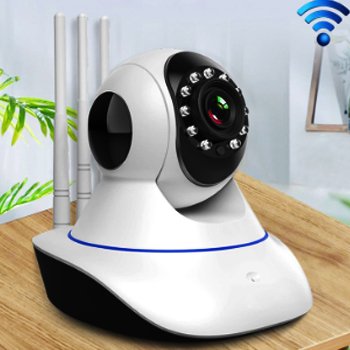Description
A Security Remote Monitoring Camera is a surveillance camera designed to provide real-time video feeds and monitoring capabilities from a remote location. These cameras are often used in various security applications, including home security, business surveillance, and public monitoring.
Key Features of a Security Remote Monitoring Camera:
Real-Time Video Streaming:
Live Feed: Allows you to view live video from the camera through a smartphone, tablet, or computer. This feature is essential for monitoring your property in real-time, no matter where you are.
High Definition Video:
Resolution: Typically available in resolutions such as 720p (HD), 1080p (Full HD), or higher (4K). Higher resolution provides clearer and more detailed video, which is important for identifying faces, license plates, and other critical details.
Wireless Connectivity:
WiFi: Many remote monitoring cameras connect to your home or office WiFi network, allowing for wireless video streaming and control. This eliminates the need for extensive cabling and simplifies installation.
Remote Access: Enables you to access the camera feed and control settings from anywhere with an internet connection using a mobile app or web interface.
Motion Detection and Alerts:
Smart Notifications: Cameras equipped with motion detection can send notifications to your phone when motion is detected within the camera’s field of view.
Customizable Zones: Allows you to set specific areas to monitor for motion, reducing false alerts from irrelevant areas.
Night Vision:
Infrared or Full-Color: Depending on the model, cameras may offer infrared night vision (black-and-white footage) or full-color night vision for clear video in low-light conditions.
Two-Way Audio:
Communication: Built-in microphones and speakers enable two-way communication, allowing you to listen to and speak with people within the camera’s range. This feature is useful for interacting with visitors or deterring potential intruders.
Pan, Tilt, and Zoom (PTZ):
Adjustable Viewing: PTZ cameras can be remotely controlled to pan across a wide area, tilt up or down, and zoom in on specific details. This provides flexible monitoring capabilities and enhances coverage.
Mobile App Integration:
Control and Monitoring: Most remote monitoring cameras come with a companion mobile app that allows you to view live video, adjust settings, receive alerts, and review recorded footage.
Storage Options:
Cloud Storage: Many cameras offer cloud storage options for recording and saving video footage, which can be accessed remotely. This may involve a subscription fee for extended storage.
Local Storage: Some models feature a microSD card slot or support for Network Attached Storage (NAS), allowing for local recording and storage.
Smart Home Integration:
Compatibility: Remote monitoring cameras often integrate with smart home systems like Amazon Alexa, Google Assistant, or Apple HomeKit, enabling voice control and integration with other smart devices.
Power Source:
Wired or Wireless: Cameras can be powered either through wired connections (e.g., PoE – Power over Ethernet) or wirelessly (e.g., battery-powered). Choose based on your installation preferences and power availability.
Durability and Weatherproofing:
Indoor and Outdoor Use: Ensure the camera is suitable for the environment in which it will be used. Outdoor models are typically weatherproof and designed to withstand environmental conditions.
Applications of a Security Remote Monitoring Camera:
Home Security: Monitor your home’s entrances, driveways, and interior spaces to enhance security and keep an eye on family members and belongings.
Business Surveillance: Keep track of activity in retail stores, offices, or warehouses to deter theft, monitor employees, and ensure safety.
Public Safety: Use in public areas like parks, parking lots, or transit stations to improve safety and monitor public spaces.
Remote Locations: Monitor properties or facilities located in remote or hard-to-reach areas, such as vacation homes or construction sites.
Considerations When Choosing a Security Remote Monitoring Camera:
Resolution: Higher resolution cameras provide clearer video, which is important for detailed monitoring and identification.
Field of View: Ensure the camera’s field of view covers the area you want to monitor effectively.
Night Vision Quality: Choose a camera with good night vision capabilities if you need to monitor areas in low light or complete darkness.
Storage Options: Decide whether you prefer cloud storage, local storage, or a combination, and consider any associated costs.
Installation and Power: Consider the ease of installation and power requirements, especially if you need a wired or wireless setup.
If you need recommendations for specific models or assistance with setup and configuration, feel free to ask!






Reviews
There are no reviews yet.